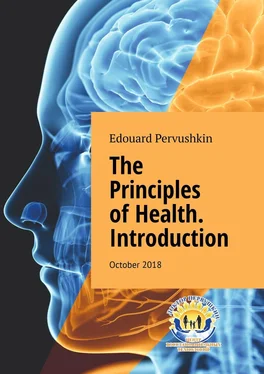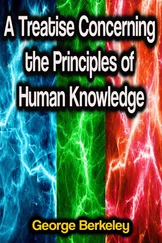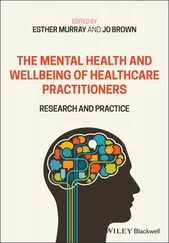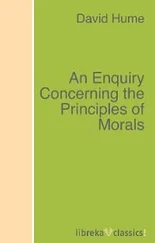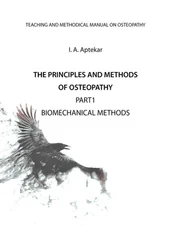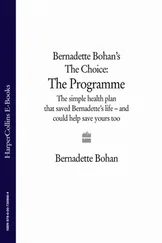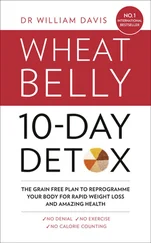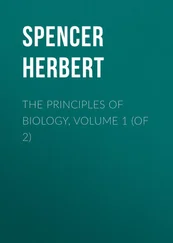Edouard Pervushkin - The Principles of Health. Introduction. October 2018
Здесь есть возможность читать онлайн «Edouard Pervushkin - The Principles of Health. Introduction. October 2018» — ознакомительный отрывок электронной книги совершенно бесплатно, а после прочтения отрывка купить полную версию. В некоторых случаях можно слушать аудио, скачать через торрент в формате fb2 и присутствует краткое содержание. ISBN: , Жанр: Медицина, на английском языке. Описание произведения, (предисловие) а так же отзывы посетителей доступны на портале библиотеки ЛибКат.
- Название:The Principles of Health. Introduction. October 2018
- Автор:
- Жанр:
- Год:неизвестен
- ISBN:9785005316820
- Рейтинг книги:3 / 5. Голосов: 1
-
Избранное:Добавить в избранное
- Отзывы:
-
Ваша оценка:
- 60
- 1
- 2
- 3
- 4
- 5
The Principles of Health. Introduction. October 2018: краткое содержание, описание и аннотация
Предлагаем к чтению аннотацию, описание, краткое содержание или предисловие (зависит от того, что написал сам автор книги «The Principles of Health. Introduction. October 2018»). Если вы не нашли необходимую информацию о книге — напишите в комментариях, мы постараемся отыскать её.
The Principles of Health. Introduction. October 2018 — читать онлайн ознакомительный отрывок
Ниже представлен текст книги, разбитый по страницам. Система сохранения места последней прочитанной страницы, позволяет с удобством читать онлайн бесплатно книгу «The Principles of Health. Introduction. October 2018», без необходимости каждый раз заново искать на чём Вы остановились. Поставьте закладку, и сможете в любой момент перейти на страницу, на которой закончили чтение.
Интервал:
Закладка:
When you cut your finger, do you give commands to the cells how to work? Our body somehow recovers, according to the preconceived plan (remember, before any work there is a plan). Some call this plan the «health matrix.» It is confirmed by the case Roger Gilchrist (director of WELLNESS INSTITUTE, USA) spoke about: «I was in one American province and paid attention to a man with a crooked index finger. I asked, „What happened to the finger?“ He answered that during some agricultural work he accidentally chopped off the finger and then it has grown crooked. To the question, „Do you know that fingers don’t grow back?“, the man shrugged, as if it was obvious stupidity.» For him this restriction didn’t exist. If there is no limit, then there is no problem.
However, it is important to understand that the brain is not smart, it’s an ideal performer. Some people at our lectures on the principles of health ask questions or even raise objections… «Well, – I answer, – then give me wow-wow.» They freeze, as it happens when you meet something unknown. Therefore, if you want to do something, you must learn how. It applies to any area of life, including restoration to health and strength.
Understanding the principles of body work makes doctor a philosopher. A doctor must reflect (see the article «Interactions. My own thoughts»). Drawing on knowledge, observation and reflection, Dr. Still, the founder of osteopathy, spoke about the importance of anatomy, physiology, chemistry and the ability to think. He claimed that the Great Architect provided for everything that is necessary for human life and health, and called it the «Divine Law.» Today we call it physiology and neurophysiology. This shocked both doctors and various theologians (of past and present). Only the incredible efficiency of Dr. Still’s work with any problems, the gratitude and respect of people, prevented them from reprisal against the doctor.
For achieving recovery, you must understand the «Divine Law» and apply tools given by Nature. There were many bright intellects in the history of mankind, but no one was able to come up with something better than the Great Architect. There were only attempts to complement His work, as if He couldn’t foresee something in the plan. A doctor’s task is to understand the plan and to use tools that were created by the Great Architect, to follow the principles (see «Autobiography» by A. T. Still). Anyone who has read this book, as well as «A Young Doctor’s Notebook» by M.A. Bulgakov, understand that the lack of reflection creates a need to follow traditions. This principle remains intact in the second half of the XIX century, at the beginning of the XX century and in the XXI century as well.
Therefore, it is important to remember that in treatment we follow not the human laws, traditions or other fabrications, but the «laws created not by human hands» (Dr. Still).
Bert Hellinger writes in «Success in Life»: «Success is the law of life. All living things are successful. Here all depends on whether we accept life as it is… At the same time life is love. All human life unfolds through love. All successful relationships are love relationships. This basic law applies in all areas.»
Isn’t it just brilliant? If the heart doesn’t work well, death follows. If the lungs fail, death comes. If relationships are unsuccessful, there is no life. If you want to live, you must be successful and fill your life with love! Otherwise… Well, you know…
If you still doubt about greatness of this world, its beauty, multidimensionality and variability, open your eyes, open your ears and other doors of perception. Trust your feelings, not your thoughts and memories of the past, which no longer exists. Remember, the World itself and our perception of it are two different things. The World is as we see it. If we perceive the world from the perspective of our ideas, frameworks, traditions, trauma or beliefs, it can look horrible. But it doesn’t mean that the World is like that, it means that we see it like that. And if you become an observer, researcher, if you replace fear with curiosity (which is natural for children), you can open another world, amazing, beautiful, magical and filled with love!
If you’ll remember the above well, conclusions about treatment become clear. Then it would be easy to understand what you need to do in an emergency and what needs to be done to heal a person. You’ll see the modest role of a doctor in human’s life and the role of a person in his or her recovery (see «Interactions. Your greatness»).
Now, if you’ll hear or maybe tell yourself or someone that to have a symptom is good, it will be clear why it is truth. A symptom tells us about a whole chain of changes that come from an initial stress. The symptom serves as a reminder of what is still unresolved and forgotten. Words of Dr. R. Hamer have a deep meaning: a disease is not an enemy that must be destroyed; it is a friend, a special biological program for adapting to stress. I would say, that a symptom is a wonderful thing! It serves as a guiding thread on the road to Happiness! I realized it after 700 personal decodings…
It’s obvious that miraculous drugs, magic injections, surgery or manipulations cannot lead to health (see «Interactions. Medicines»). Remember a proverb: «Medicus curat, natura sanat» – a physician treats, nature heals. This is a great cure for the «syndrome of God» in some arrogant boasters. If you create conditions for the normal functioning of an organism, it restores itself, relying on the internal plan of the «health matrix».
Therefore, to change a symptom, be it physical or mental, it is necessary to change the «health matrix», the fabric of your life. As if some rails led you to one station, but you need another one. In this case you get on a new track and head to where you need to be.
For successful healing it is worth to remember four rules, written by Dr. Still:
1. The body is a single whole
If someone argues that kidneys can work on their own and the circulatory system is independent, such claims have no meaning in physiology and deserve a unequivocal attitude toward mental abilities of the speaker. Dr. Still also reminded of the wholeness of the Body, Mind and Spirit.
2. The body is a self-healing and self-regulating system
We have already talked about it, discussing the «health matrix». We need certain conditions for recovery, not magic pills or manipulations. These conditions involve a delivery of the necessary substances and removal of metabolic products.
3. The rule of the artery
If there is an unobstructed blood flow and timely outflow, the metabolic processes will proceed normally. In this case there is no room for the disease.
4. The structure determines the function, the function affects the structure
A kidney can’t work as a heart, a lung can’t function as a muscle. They have different structures. However, if you load a muscle, it changes, it becomes larger, the bone, tendons and ligaments between the bones thicken. The same applies to the lung if it works with an increased load up to the proliferation of cells, which means lung cancer. If, as a result of stress, a tension arose in the system and blood vessels and nerves become pinched, function will be impaired. Disorder of function will lead to the destruction of a structure.
Encountering some symptom, we must ask ourselves: what happens with the blood supply in the problem area?
Here it is worth to talk about why Dr. Still called this science osteopathy. Although he speaks clearly about it in his books, I didn’t immediately realize why. Anyone who has seen a schema of a human skeleton, vascular and nervous system, can mentally combine them. And now anyone, even without medical education, can answer a question if there is any part of the body that isn’t connected with the skeletal system. During lectures the answer is usually given in 10—15 seconds – of course not! Tension in any part of the body, in any organ, vessel or nerve trunk will lead to limited mobility. Bone is the hardest tissue, it’s easy to feel and analyze its mobility. After carrying out the technique it’s easy to double-check changes in bone mobility, be it a rib, vertebra, femur, 8 wrist bones or a temporal bone. For 7 years I pondered a question «Why Dr. Still used a bone in the name of his science?» You answered this question in 15 seconds. Here I see the only benefit of a specialist: saving of time. A high-level specialist can explain the most complex problem in a simple phrase and help you to ask a right question so you can answer it yourself. Then no one will confuse you with fanciful fantasies.
Читать дальшеИнтервал:
Закладка:
Похожие книги на «The Principles of Health. Introduction. October 2018»
Представляем Вашему вниманию похожие книги на «The Principles of Health. Introduction. October 2018» списком для выбора. Мы отобрали схожую по названию и смыслу литературу в надежде предоставить читателям больше вариантов отыскать новые, интересные, ещё непрочитанные произведения.
Обсуждение, отзывы о книге «The Principles of Health. Introduction. October 2018» и просто собственные мнения читателей. Оставьте ваши комментарии, напишите, что Вы думаете о произведении, его смысле или главных героях. Укажите что конкретно понравилось, а что нет, и почему Вы так считаете.
